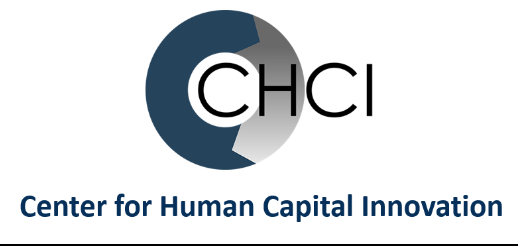
Missed Opportunities: Disability, Neurodiversity, Age
The importance of full and fair opportunities and access for everyone in the workplace is well understood, with numerous advantages, including innovation, engagement, and resilience. However, amid efforts to promote fairness across particular marginalized groups, others are sometimes overlooked or unintentionally pushed to the sidelines. These missed opportunities can affect everything from team morale to long-term business performance.
In this post, we’ll explore three key areas where opportunity and access often fall short—disability, neurodiversity, and age—and discuss practical ways organizations can address these gaps. Whether you lead a small team or a large department, understanding these overlooked aspects can help ensure your efforts truly leave no one behind.
The Forgotten Dimensions of Disability
When we talk about creating positive workplaces, we typically focus on universal issues like recruiting a broad scope of candidates and anti-discrimination policies. While these are absolutely essential, disability opportunity and access tend to receive less attention. Many organizations overlook accommodations that would empower employees with visible or invisible disabilities to contribute their best work. The following are common oversights:
- Physical Accessibility: While wheelchair ramps and accessible restrooms are legally mandated in many places, offices can still present daily challenges. From heavy doors without automatic openers to meeting rooms with inaccessible layouts, seemingly small barriers can have a big impact on employee productivity and morale.
- Digital Accessibility: Employees with visual or hearing impairments may struggle if documents, websites, or software tools aren’t designed with accessibility in mind. Missing captions on video presentations, for instance, can exclude employees who rely on assistive devices or subtitles to follow along.
- Invisible Disabilities: Conditions such as chronic pain, anxiety disorders, and autoimmune diseases often go unnoticed in the workplace. This can lead to misunderstandings or unfair judgments. Colleagues might perceive someone as unreliable if they need to work from home at times, take breaks, or adapt their schedules for medical reasons.
Hiring and retaining talent with disabilities isn’t just about checking a box for compliance. Employees who navigate life with disabilities bring unique insights, resilience, and problem-solving skills that can spark innovation. Research repeatedly shows that organizations with teams that have a variety of experiences and backgrounds are more creative and more connected to a broad consumer base. To increase your focus on employees with disabilities, consider the following practices:
- Accessibility Audits: Regularly review your office setup, software tools, and communication methods. Solicit feedback from employees with disabilities or disability organizations to identify problem areas.
- Flexible Work Policies: Remote work or flexible scheduling can benefit everyone and are particularly crucial for employees who manage chronic health issues. Sometimes referred to as the “Curb-Cut Effect,” accommodations originally intended for people with disabilities can help others, such as how curb cuts for wheelchairs create more access for people pushing strollers, bicyclists, and more.
- Disclosure: Create a culture where discussing the need for accommodations is seen as routine, not a burden. This involves training managers to respond with empathy and proactive support when employees disclose a disability.
Embracing Neurodiversity
Neurodiversity refers to the variety of ways people experience and process the world around them, including diagnoses such as autism, ADHD, dyslexia, and more. While some organizations have recognized the strengths neurodivergent employees bring—benefits such as creative problem-solving, attention to detail, and visionary thinking—many still treat neurodiversity as an afterthought. The following are common oversights:
- One-Size-Fits-All Training: Standardized onboarding, training materials, and performance evaluations can inadvertently disadvantage neurodiverse employees who excel in specific formats or need additional supports (e.g., more time for tests or instructions in multiple modalities).
- Open-Plan Offices: While trendy open-office layouts may foster spontaneous collaboration for some, they can be disruptive for those who are sensitive to noise or visual distractions, such as many individuals on the autism spectrum or with ADHD.
- Expectations for Social Norms: Unspoken rules about eye contact, conversational pacing, or what’s considered “friendly small talk” can become barriers if they don’t account for different communication styles.
Neurodivergent individuals often have strong pattern recognition, unique analytical abilities, and a high capacity for innovation. Yet they can be marginalized if the work environment doesn’t accommodate their needs. By adjusting processes and acknowledging different communication styles, organizations tap into a wider range of creative, out-of-the-box thinking. To embrace neurodiversity, consider the following practices:
- Adjust the Environment: Offer noise-canceling headphones, quiet rooms, or flexible seating arrangements. Small, low-impact changes can help neurodivergent employees focus and thrive.
- Individualized Support: Ask team members how they prefer to receive communications and feedback. Some might appreciate written instructions or additional time to process information prior to group discussions.
- Educate the Workforce: Short training sessions on neurodiversity can help colleagues understand, respect, and effectively collaborate with their teammates.
Bridging the Age Gap
Age is another area where disparities are overlooked. Considerations for both older and younger workers are often less explored than other demographic metrics. In today’s multigenerational workforce, you might have employees ranging from entry-level Gen Z workers to long-tenured Baby Boomers, and the potential for mutual learning is immense. However, stereotypes and preconceived notions linger. The following are common oversights:
- “Overqualified” or “Underqualified” Labels: Older workers may be passed over for roles due to assumptions about being “out of touch” with new technologies. Younger workers, meanwhile, might be deemed too “green” for leadership positions despite strong capabilities.
- Lack of Tailored Development: Training programs often assume a uniform stage in career and life. Individuals close to retirement might be overlooked for leadership development. Meanwhile, younger workers might only find mentorship with an outdated understanding of their career and/or life stage.
- Cultural Disconnects: An organization’s social events or communications might skew toward the preferences or schedules of a single age group, such as a bar with dim lighting or events scheduled during school pickup time, excluding or alienating others in the process.
Teams comprised of individuals across the generations enriches an organization’s perspective. Seasoned employees can bring historical context, mentorship opportunities, and deep industry expertise. Younger employees often provide fresh perspectives, technological fluency, and a willingness to experiment. Together, a multigenerational team can inspire balanced decision-making and a more innovated approach to challenges. To bridge the age gap, consider the following practices:
- Reverse Mentorship Programs: Pair seasoned employees with younger colleagues so both can learn from each other’s expertise, whether it’s experiential wisdom or the latest tech-savvy approaches.
- Flexible Work Policies: Offer flexible schedules, which benefits parents with young children while supporting workers toward the end of their career that are beginning to transition to retirement.
- Career Path Transparency: Show employees of all ages that there are multiple paths to advancement, whether someone has 30 years of experience or joined the team two years ago. Ensure access to training and development programs, no matter how early or late a team member is in their career.
Tips to Make Opportunity and Access Truly Universal
While progress has been made in raising awareness of opportunity and access, there’s still work to be done to ensure no one is left out. A genuinely fair organization recognizes the wide range of human experiences and actively seeks to accommodate and celebrate those differences. By taking into account disability, neurodiversity, and age, organizations can access a more creative, engaged, and high-performing workforce.
Here are a few takeaway tips to get started:
- Listen & Learn: Encourage open conversations with employees about what they need to do their best work.
- Review Policies & Practices: Conduct regular audits for accessibility, flexible work arrangements, and generational access.
- Train & Educate: Offer short, targeted training on topics like neurodiversity and age prejudice, and emphasize empathy in leadership development.
- Pilot New Ideas: Try small-scale initiatives (e.g., quiet rooms, reverse mentorship, digital accessibility upgrades) and collect feedback for improvement.
- Celebrate Successes: Recognize and share stories where inclusive practices have led to breakthroughs or sparked innovation.
Ultimately, these considerations aren’t about checking boxes—it’s about nurturing an environment where everyone has the resources, respect, and opportunity to fully contribute. By proactively addressing the often-overlooked dimensions of disability, neurodiversity, and age, organizations can transform their culture and benefit from a richer tapestry of perspectives and skills. It’s a win for the employees who feel valued and a win for the organization at large.
What are some unique ways that you have been able to increase opportunity and access in your organization? What feedback have you received from your employees that could have helped you?
Leave a comment below, send us an email, or follow us on LinkedIn.


Leave A Comment